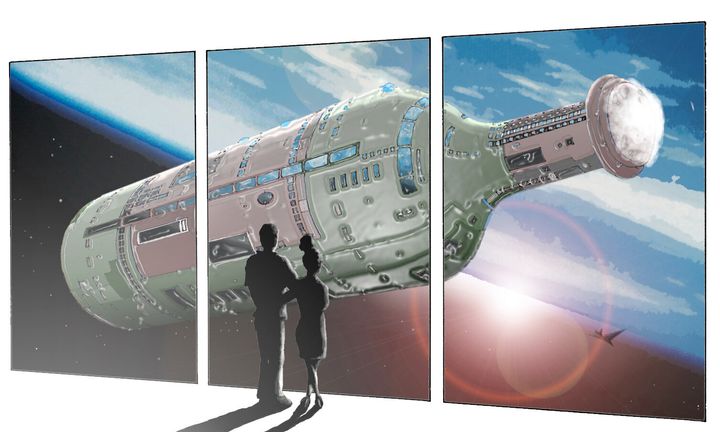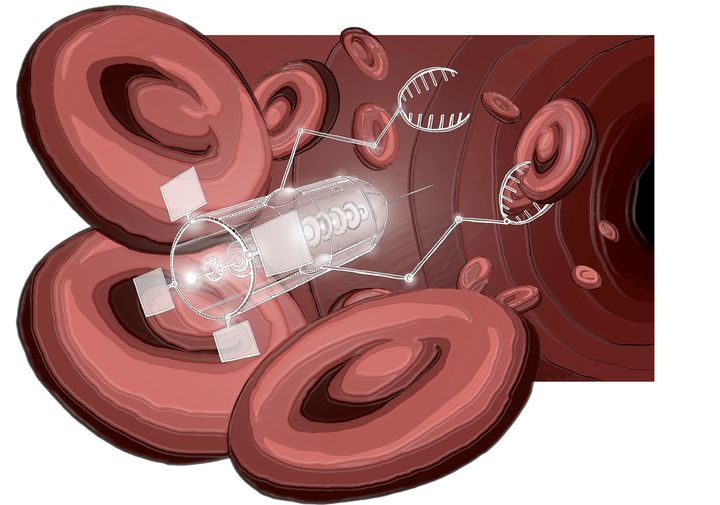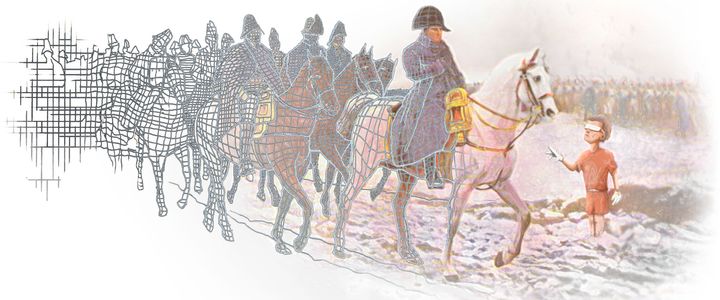It's a Friday afternoon and you've left the office after a busy week. You hail a driverless cab, powered by nuclear fusion, that takes you to a sub-orbital spaceship which in turn flies you up to a space hotel for a well-earned weekend break away from it all. What you might think belongs to the realm of science fiction could be a reality in 100 years' time.

Humans Invent headed down to Sharp Laboratories of Europe in Oxford this month to mark their centenary with a series of workshops on life 100 years from now. We got together five of their top scientists to discuss everything from energy to transport to robotics in an attempt to envisage what life will be like in 2112. We took with us our video team to film the workshops and artist Neil Jones to provide illustrations of how the scientists imagine the future.

A nanorobot of the future unblocking a vein.
The scientists covered everything from space hotels to nuclear fusion but I want to pick out a few of the highlights. In the workshop on health research supervisor, Matthieu Senes, believed that in 100 years we will have micro robots that can swim through our veins and mend parts of the body like miniature surgeons. Interestingly, when they looked at robotics more deeply, many argued that developers might shy away from making them too humanoid as people might feel uncomfortable around them. Research manager, Valerie Berryman-Bousquet thinks they will look, 'more like R2-D2 than C-3PO.'
When it came to transport, the group believed one notable difference will be the speed at which we travel. Research supervisor, Tom Ford, thinks we'll have 'ultrafast sub-orbital planes which go sufficiently far out of the atmosphere they can go much faster. People are projecting travel from the UK to Australia in as little as two hours.'
For the children of the future education is going to be far more interactive. In history lessons, for example, the past could really be brought to life with the use of advanced augmented reality. Simply put on a headset and you could find yourself in the midst of the Napoleonic war! It was conjectured that the role of the classroom would be very different. Instead of the more traditional, passive model where a teacher tells you what you need to learn, children would watch a video lesson beforehand and then come to the classroom to discuss the subject and ask the teacher questions.
When it came to entertainment and communication the group believed it would be a much more immersive world. For example, if you watched a film it would feel like you were on the set and if you wanted to communicate with a friend 1000s of miles away it would be like you were standing right next to him/her.

Bringing history to life: meeting Napoleon on the battlefield.
On the contentious issue of energy, along with the rise in use of renewable resources the group believed that nuclear fusion could be harnessed, producing a lot of energy with little or no waste and by-products.
At the end of the workshops we placed the illustrations and film of the series in a time capsule and buried it in Sharp Laboratories' garden. I wonder how close the scientists will be in their predictions if the time capsule is dug up in 100 years' time?
If you want to watch all the videos you can see the full series at Humans Invent
